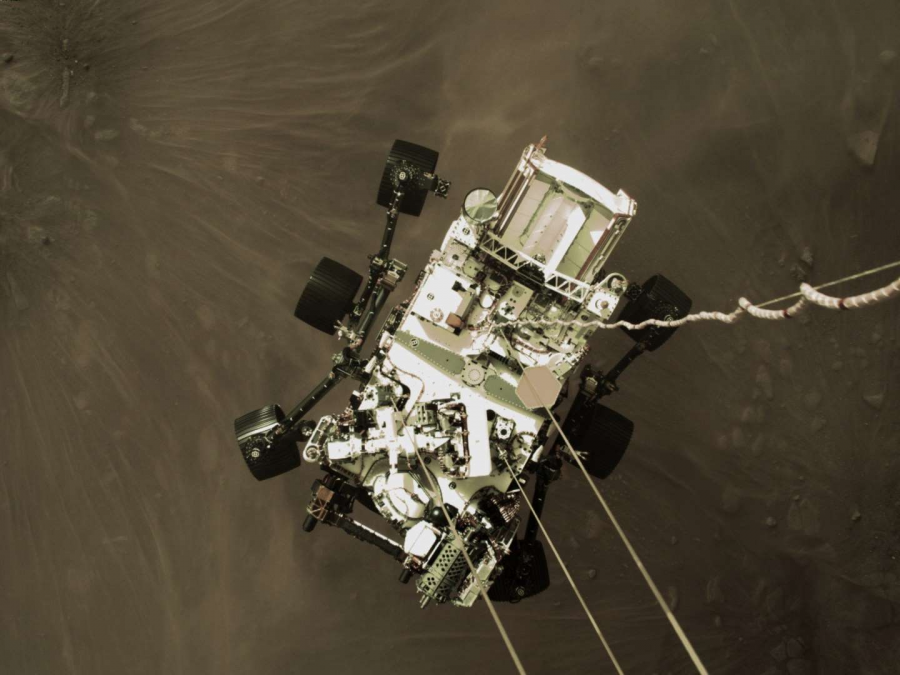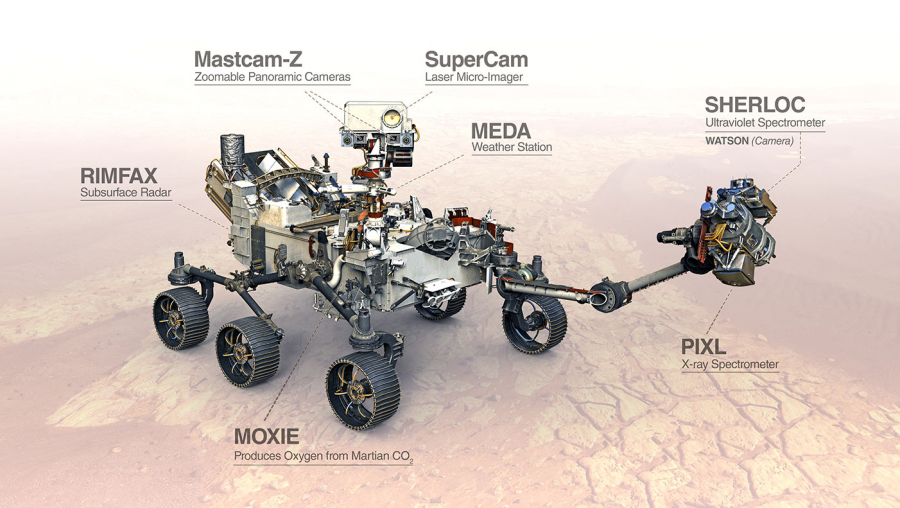Past Martians or Life on Mars?
After waiting the past eight months, the Perseverance rover finally landed. Adam Stelzner, chief engineer of the Perseverance mission, who also managed the Curiosity rover’s descent to Mars in 2012, states that his team is “overwhelmed with excitement and joy.”
Part of a video from NASA of the Perseverance rover landing on Mars.
March 1, 2021
Microsoft News says that Perseverance was launched on July 30, 2020, and landed on Mars February 18, 2021. Its hardest challenge was the process of landing on Mars, known as the “seven minutes of terror,” as it had to descend to the Red Planet. The rover had to endure heat up to 2,370 degrees Fahrenheit once entering the atmosphere, and had to go through a process of safely landing (to watch the video, click here).
According to CBS News, Adam Stelzner, chief engineer of the Perseverance rover says that NASA was “overwhelmed with excitement and joy to have successfully landed another rover on Mars.”
As CBS News said, the Perseverance rover’s main purpose is to look for past signs of life by collecting samples of rock and soil in a dried up lake. The rover will collect these samples by the use of its seven-foot-long arm, which has a drill at the end. The samples will then be left in caches, supposedly to be retrieved back to Earth by another rover within the next decade. 3.5 billion years ago, Mars was filled with water and habitable environments similar to Earth, perhaps in which organisms thrived. The Jezero Crater had a lake reaching hundreds of feet deep, which deposited sediments in a delta. Microbial organisms may have lived in the water, and are thought to be preserved in the sediments. Along with that, Perseverance will extract oxygen from Mars that could possibly allow us to make our own air and rocket fuel. A helicopter, the size of a drone, named Ingenuity will be released to test flight in the light atmosphere. If things work out with the drone, there may be future missions with drones to extend their research.
CBS News also states that NASA will have the rover dig 40 cores from the ground and will seal them into sample tubes. A different approach will be made though. NASA plans to launch a lander to Mars, the “Martian Dune Buggy,” which will land in 2028 and collect those samples and load them in a rocket, finally sending them into orbit around the red planet.
All in all, the information found on Mars could be something new beyond our understanding, and could advance our understanding of astrophysics and future technology. Looking even further into the future, this could allow future generations to live on Mars, and the first people to land on Mars could be the 100 people in Elon Musk’s Starship.










